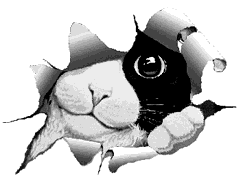
NORWEGIAN FOREST CAT
ORIGIN
The skogkatt, meaning forest cat, really did come out of the Scandinavian forests some time in the last 4,000 years.These are the cats that explored the world with the Vikings, protecting the grain stores on land and sea, and which are believed to have left their progeny on the shores of North America as a legacy to the future. The Forest Cat was presented to the CFA Board for registration acceptance in February 1987, and in 1993, these wonderful works of art from nature were accepted for full championship status.
ASPECT
The tail is always magnificent, being as much as twelve inches or more when fanned to its fullest. Perhaps the most impressive part of the coat is the mane. On a fully mature cat, i.e. one over five years of age and which is challenged by the most adverse cold weather, the mane is nothing less than spectacular. It is long, dense and very, very impressive! This, unfortunately, may disappear in the spring, but rest assured that it will begin to lengthen again as the days begin to shorten. The Forest cat has bright emerald green eyes with a band of gold. They appear in coats of most colors, from pure white to deepest coal black, with every possible coat pattern and color combination in between, with the exception of the colorpoint colors as seen in the Siamese or Persian-Himalayan such as seal point or chocolate point. Darker cats require less coat to keep warm since they absorb more heat from the sun. Lighter cats tend to have fuller coats with more undercoat. Some colors change from light to darker tones with the seasons.
CHARACTER
Their personalities differ, depending upon the type home in which they spend their early kittenhood. As with any other breed, a kitten handled and petted by many loving people from birth and which has been exposed to children, cats and dogs will be different from one born and raised in an isolated area with limited human contact.
CARE
A question frequently asked is about the care the long coats require. As one breeder is fond of saying: “Mother Nature does not have hairdressers in the deep woods, so she did not design the cat to require the daily attention necessary to some other longhaired breeds.” Very little, if any, combing is required for non-show cats, but is recommended during spring shedding.

